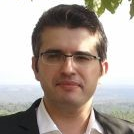Wastewater and Bioelectricity Generation
A special issue of Water (ISSN 2073-4441). This special issue belongs to the section "Wastewater Treatment and Reuse".
Deadline for manuscript submissions: closed (15 August 2023) | Viewed by 4445
Special Issue Editors
Interests: water quality; biomaterials for water treatment; metal pollution; river bed sediments; valorization of residues
* Tel.: +34986804936
Special Issues, Collections and Topics in MDPI journals
Interests: energy; additive manufacturing; optimization
* Tel.: +34986804934
Special Issues, Collections and Topics in MDPI journals
Special Issue Information
Dear Colleagues,
The present Special Issue deals with wastes, their reduction, and their potential use as substrates to transform chemical energy into electrical energy. The main purpose is to promote measurements to implement a more sustainable circular economy and reduce the carbon footprint. Moreover, the 2030 Agenda for Sustainable Development aims to protect the environment and, particularly, goals 6 (Ensure availability and sustainable management of water and sanitation for all) and 7 (Ensure access to affordable, reliable, sustainable, and modern energy for all) aim at the need to accelerate sustainable electricity production technologies. There is an increasing concern about the role of both producers and customers in the role of generation and disposal of wastes, going from a delegated responsibility to a shared responsibility, which affects the commitment of the producers and generates a chain of responsibility that tries to minimize the waste produced by converting it into valuable products.
In particular, the topics of interest in this Special Issue include (but are not limited to):
- Recent advances in the treatment of wastes and energy production;
- Microbial fuel cells for sustainable energy production;
- Waste-to-bioenergy processes;
- Additive manufacturing for wastewater and bioelectricity generation.
Dr. Rosa Devesa-Rey
Dr. Andrés Suárez
Dr. Elena Arce
Guest Editors
Manuscript Submission Information
Manuscripts should be submitted online at www.mdpi.com by registering and logging in to this website. Once you are registered, click here to go to the submission form. Manuscripts can be submitted until the deadline. All submissions that pass pre-check are peer-reviewed. Accepted papers will be published continuously in the journal (as soon as accepted) and will be listed together on the special issue website. Research articles, review articles as well as short communications are invited. For planned papers, a title and short abstract (about 250 words) can be sent to the Editorial Office for assessment.
Submitted manuscripts should not have been published previously, nor be under consideration for publication elsewhere (except conference proceedings papers). All manuscripts are thoroughly refereed through a single-blind peer-review process. A guide for authors and other relevant information for submission of manuscripts is available on the Instructions for Authors page. Water is an international peer-reviewed open access semimonthly journal published by MDPI.
Please visit the Instructions for Authors page before submitting a manuscript. The Article Processing Charge (APC) for publication in this open access journal is 2600 CHF (Swiss Francs). Submitted papers should be well formatted and use good English. Authors may use MDPI's English editing service prior to publication or during author revisions.
Keywords
- microbial fuel cell (MFC)
- waste reduction
- innovation in wastes treatment
- sustainable wastes management
- waste-to-bioenergy conversion technologies
- additive manufacturing
Benefits of Publishing in a Special Issue
- Ease of navigation: Grouping papers by topic helps scholars navigate broad scope journals more efficiently.
- Greater discoverability: Special Issues support the reach and impact of scientific research. Articles in Special Issues are more discoverable and cited more frequently.
- Expansion of research network: Special Issues facilitate connections among authors, fostering scientific collaborations.
- External promotion: Articles in Special Issues are often promoted through the journal's social media, increasing their visibility.
- Reprint: MDPI Books provides the opportunity to republish successful Special Issues in book format, both online and in print.
Further information on MDPI's Special Issue policies can be found here.






